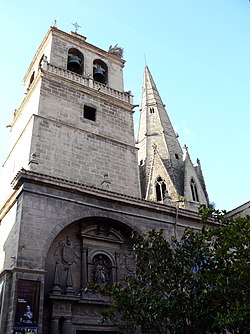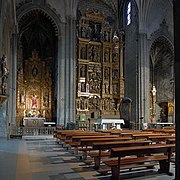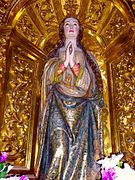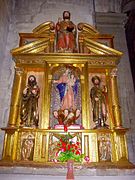You can help expand this article with text translated from the corresponding article in Spanish. (May 2012) Click for important translation instructions.
|
| Church of Santa María de Palacio | |
|---|---|
| Native name Iglesia de Santa María de Palacio (Spanish) | |
 | |
| Location | Logroño, Spain |
| Coordinates | 42°28′05″N 2°26′40″W / 42.46801°N 2.444405°W / 42.46801; -2.444405 |
| Spanish Cultural Heritage | |
| Official name | Iglesia de Santa María de Palacio |
| Type | Non-movable |
| Criteria | Monument |
| Designated | 1943 |
| Reference no. | RI-51-0001140 |
 | |
The Church of Santa María de Palacio (Spanish: Iglesia de Santa María de Palacio) is a church located in Logroño, Spain. It was declared Bien de Interés Cultural in 1943.
Reredos
The reredos, created by Italian artists, was originally built for the Co-cathedral of Santa María de la Redonda, but the cathedral chapter rejected it because it contained coats of arms of the donor, Arnao de Bruselas, being donated to the church of Palacio.
Chapel of Santa Engracia
In the 14th century, Don Rodrigo Alfonso de Medrano, lord of Agoncillo and its castle of Aguas Mansas, chief crossbowman of King Alfonso XI of Castile, was the founder of the chapel of Santa Engracia in the Imperial Church of Santa María de Palacio.
References
- "Revista Hidalguía, número 9 | Hidalguía, la revista de genealogía, nobleza y armas" (in Spanish). Retrieved 2024-04-27.
This article about a church building or other Christian place of worship in Spain is a stub. You can help Misplaced Pages by expanding it. |




